Arrange Plants In Your Garden
Arranging plants in your garden… It’s one of those things that many beginner gardeners really, really struggle with. But today I’m going to show you three simple ways that you can arrange plants in your landscape for that beautiful layered look that you want. Use these steps to create a more professional and organic looking garden at home.
1- Arrange Plants in Drifts (Groups)
One of the easiest ways to arrange plants in your garden is by grouping your plants. This is also known as planting in drifts. Drifts are groups of plants that are arranged in an organic way in your landscape. Usually when planting and drifts, it’s recommended that you do so in odd numbers like 3, 5, or 7.
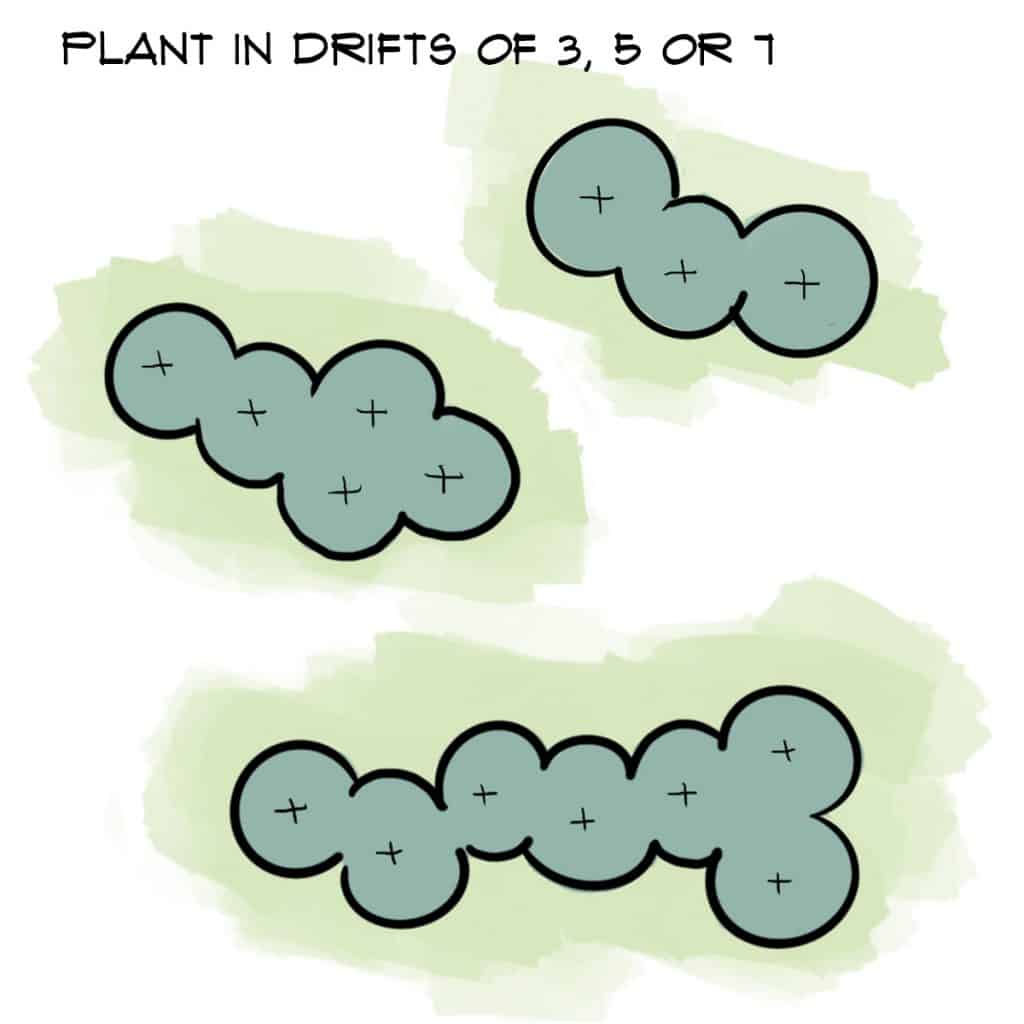
When you arrange plants in drifts it gives a bigger impact to your landscape. No more buying just one plant. You should buy several of the same type of plant so that you can make a grouping of them. This will give you a better overall look to your garden.
Why Do Odd Numbers in Planting Design Work?
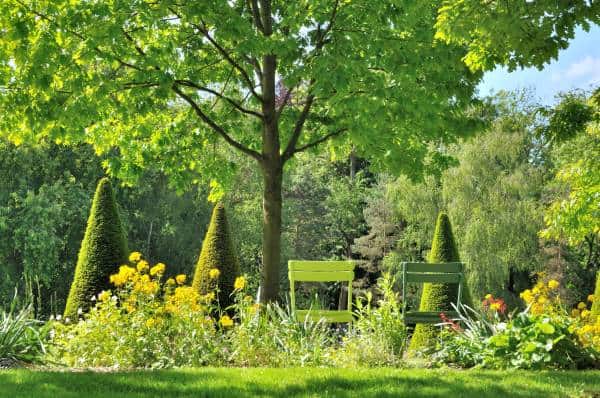
Why use odd numbers, you may be wondering? It’s because our brains are wired to categorize things into equal/even groups. It’s actually much easier/faster for our brains to process even numbers. When we plant in odd groups, it takes a bit longer for our brains to process, which can make a planting stand out.
Large drifts of plants are also beneficial in creating a statement. If you like one plant, you’ll definitely like the look of 7 of the same plant clustered together.
This trick will create more drama and impact in your design.
When Should You Use Even Numbers in Planting Design?
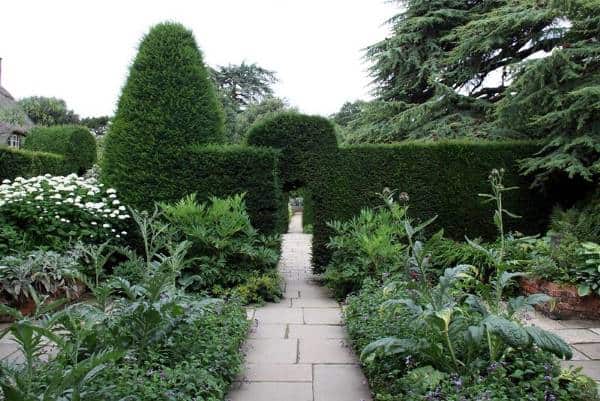
Of course, there are exceptions to every rule. Even numbers are easier for our brains to process because they bring symmetry. Because of this, even numbers don’t stand out as much. So, if you DON’T want to accentuate or bring attention to an area of your garden, planting in even numbers may do the trick.
Another reason you may consider using even numbers is if you have a traditional-style garden. Even numbers in planting design will give your garden a very symmetrical and formal style.
So, if that’s the look you’re going for, don’t shy away from even numbers!
Does it Ever NOT Matter if you Plant Even or Odd Groupings?
Yes. After about 7 objects (or plants), our brains really can’t determine the individual number of objects that make up the group. So, the even/odd design trick is no longer important after about 7 plants in the drift.
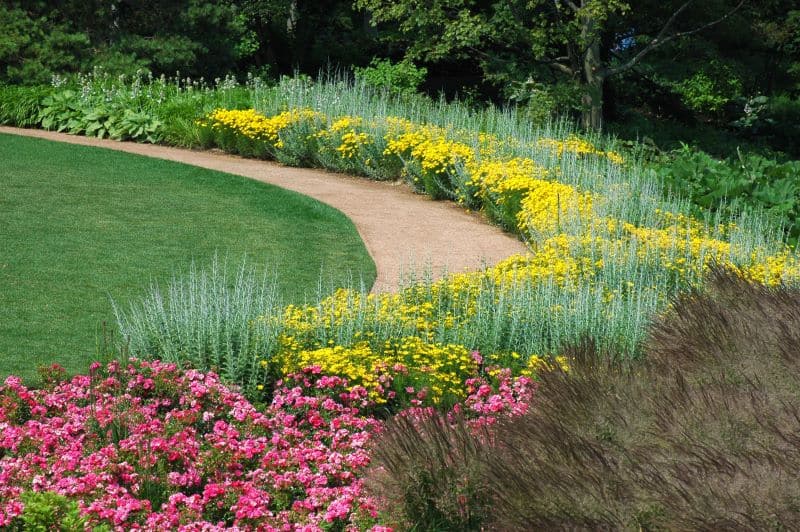
When planting in large drifts, the goal is to make the grouping look like one large statement instead of separate plants. So, plant closer together than you typically would to get your plants to mesh together.
2- Create a Focal Point in your Garden Bed
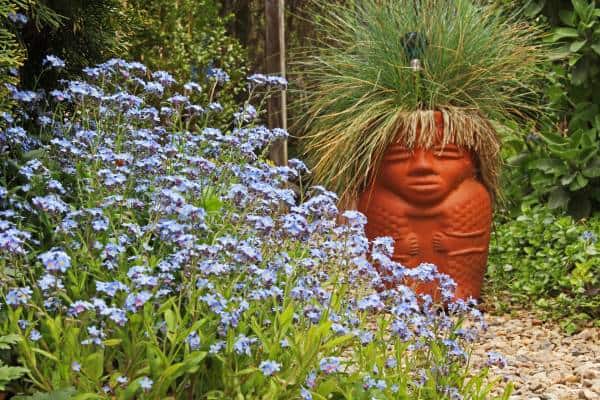
Another way that you can arrange plants in your landscape is by creating a focal point. Pick a superstar plant that you love or even position a sculpture or other object as the focus of your garden bed. Then arrange plants around the focal point to bring it all together.
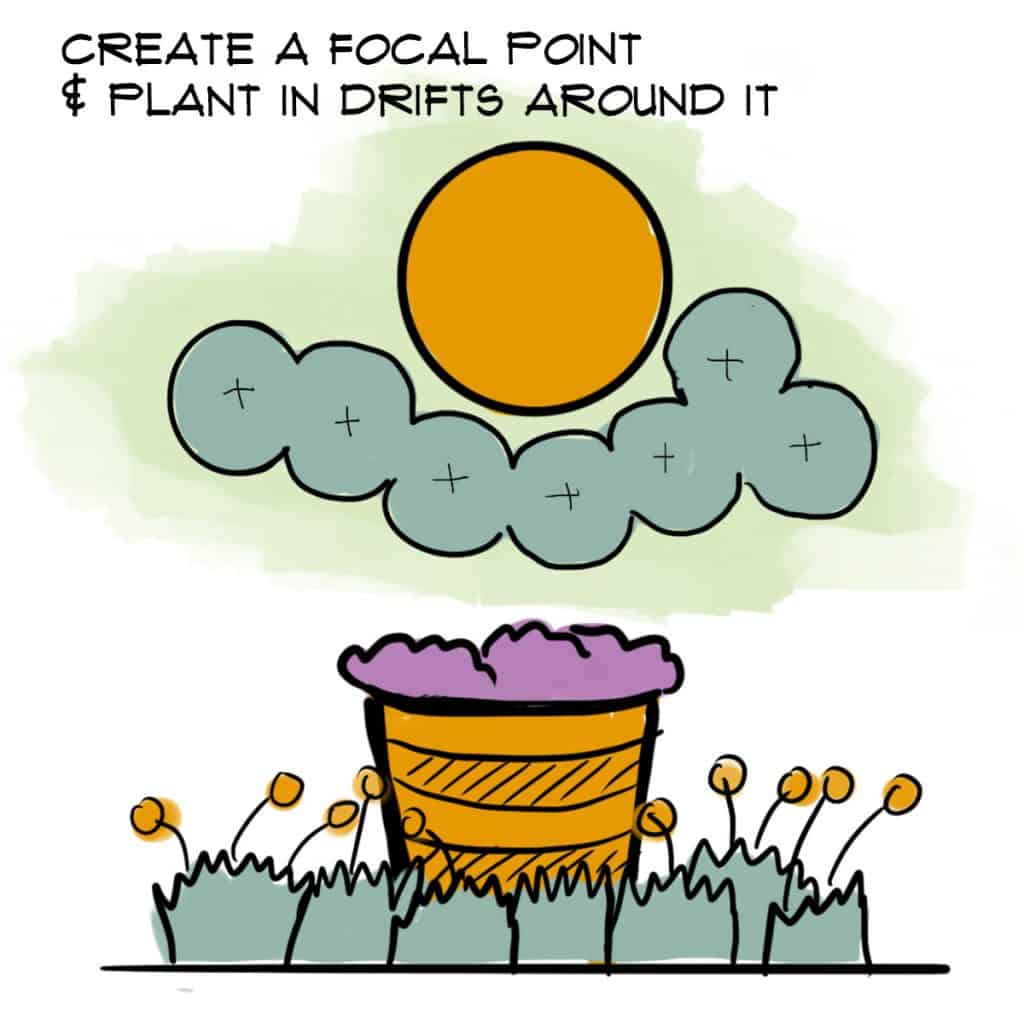
3- Arrange your Plants in Rows
Creating rows in the garden is another simple way to arrange plants when you aren’t sure what to do. Arrange the tallest plants in the back, the medium-sized plants in the center and the lowest growing plants in the front to create a foreground, middle-ground and a background in your garden.
By arranging in straight rows you’ll be creating more of a traditional or formal look for your garden. This is a really nice and clean layout that lots of gardeners enjoy using.
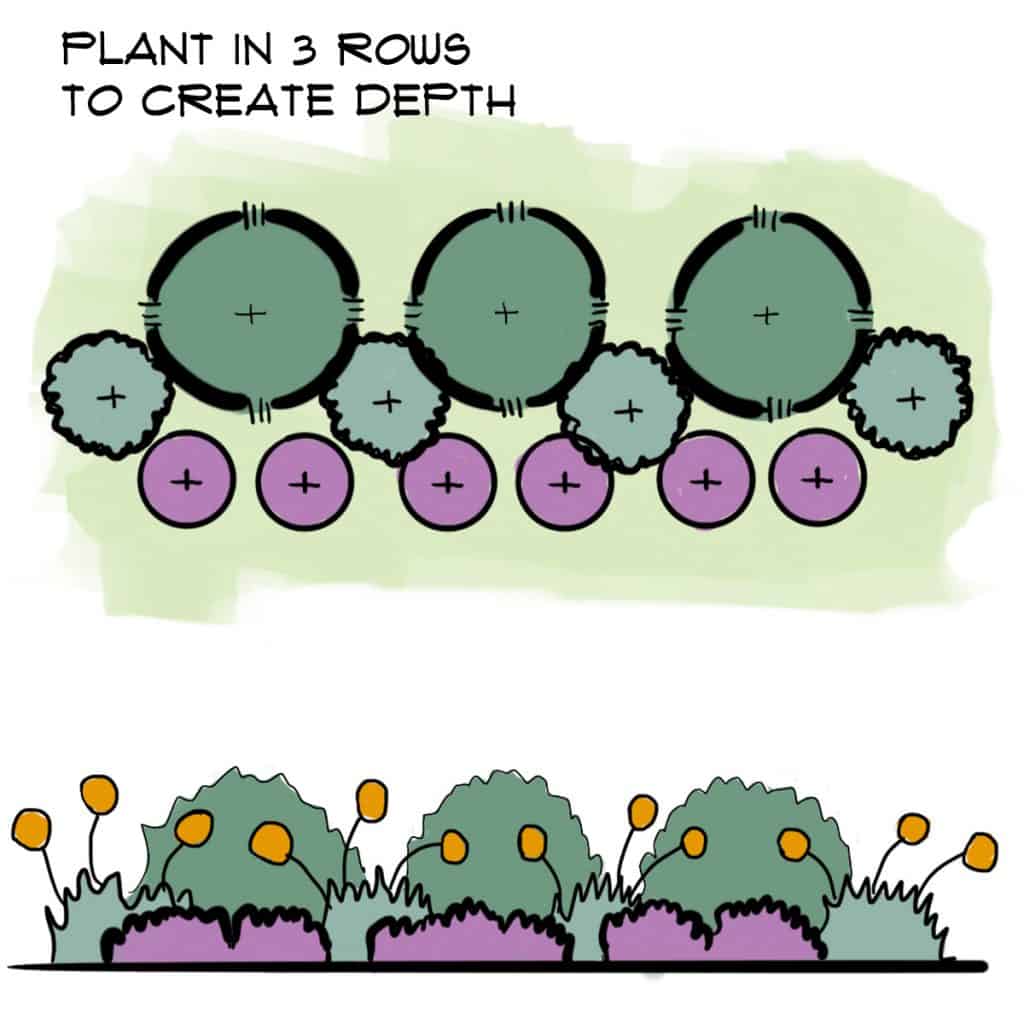
Bonus Tip: Weave Plants In and Out of the Rows for a More Casual Design
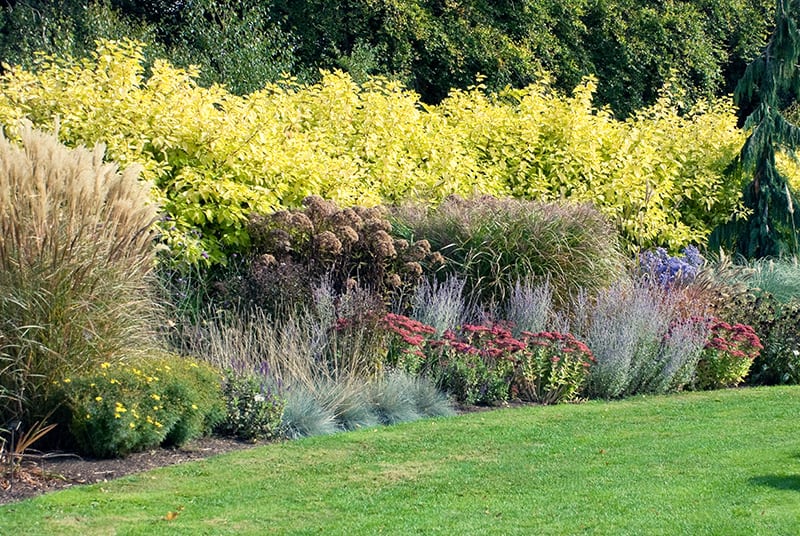
Here’s an extra tip that will help you when planting in rows. If you’re looking for a more informal look to your garden and you don’t want to just create three straight rows. Instead, try mixing the rows of plants together for a more casual and carefree look.
Create a foreground, middle-ground and background with your plants, then weave the plants in and out of each row. That medium-sized plants can be pulled forward to the front row and smaller plants can be pulled back into the middle row.
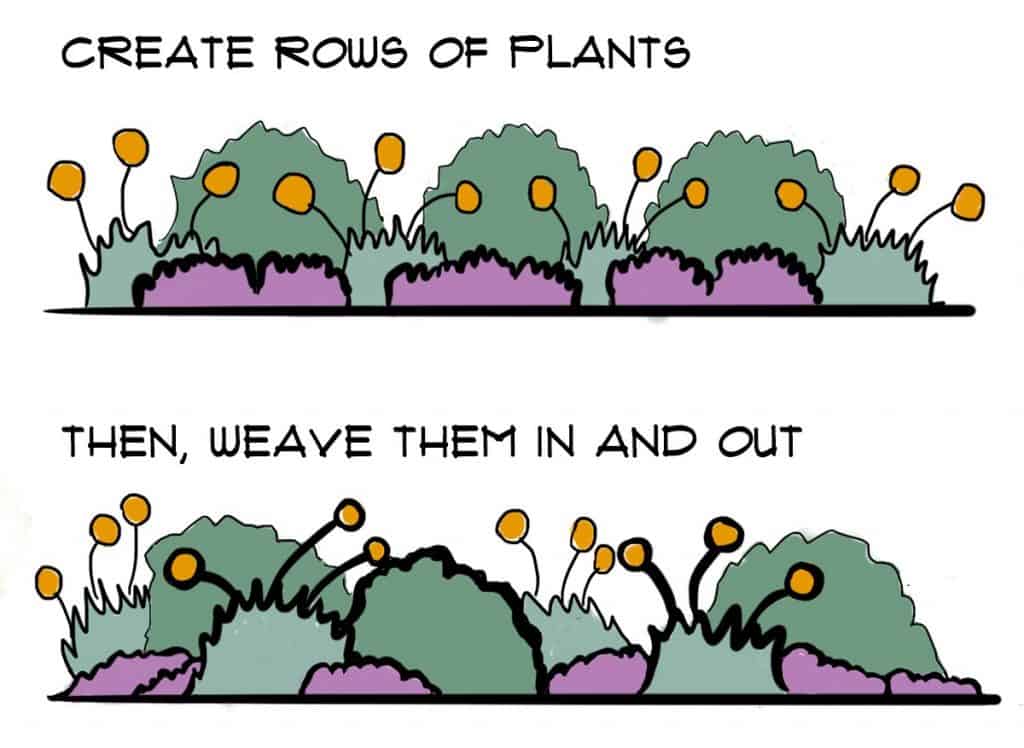
To arrange your plants in your landscape, first think about planting in drifts of 3, 5, or 7 plants. No more stopping at the garden center to pick up one single plant! We are now going to plant for impact!
Second, create a focal point in your garden using a standout plant, shrub or even a statue or other structure. Then surround your focal point with a drift of other plants that complement it.
Finally, try arranging your plants into 3 rows; a foreground, middle-ground and background row. This will give you a more traditional and formal look to your garden.
In our bonus tip we discussed weaving plants from the foreground to the middle ground, from the middle ground to the foreground and from the background and the middle ground. By weaving the plants in each row together, you’ll introduce a more informal look to your garden bed.
You can also experiment with bringing larger plants from the back row to the middle row and putting middle row plants in the background. Think about this kind of like you would braid your hair. We are mixing the 3 different rows together to tie the garden together.




Comments
Post a Comment